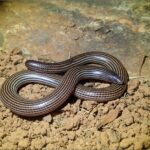Herpetological Surveys Limpopo Province: The Quest for ‘Extinct’ Reptiles
Recent herpetological surveys Limpopo Province conducted by the Endangered Wildlife Trust’s Conservation Science Unit have shed new light on the Woodbush region’s remarkable reptile and amphibian diversity. While the team’s primary goal – rediscovering the officially extinct Eastwood’s Long-tailed Seps (Tetradactylus eastwoodae) – remains unfulfilled, the expedition yielded significant findings that reshape our understanding of this ecological hotspot.
Expedition Highlights
- 50 species recorded (10 amphibians, 40 reptiles)
- Valuable DNA samples collected for 7 taxonomically uncertain species
- 208 new distribution records for the region
- Key species documented:
-
Vulnerable Methuen’s Dwarf Gecko (Lygodactylus methueni)
-
Near Threatened Woodbush Legless Skink (Acontias rieppeli)
-
Northern Forest Rain Frog
Innovative Survey Methods
The team employed specialised trapping systems featuring:
- Drift fencing (30m per trap)
- Pitfall traps (5 per array)
- Funnel traps (6 per array)
- Daily monitoring following strict ethical protocols
“While we didn’t find our ‘Holy Grail’,” notes Dr Oliver Cowan, “we’ve significantly advanced knowledge of this understudied region and identified critical conservation priorities.”
Herpetological Surveys Limpopo Province: Conservation Implications
The surveys revealed:
-
New population data for threatened species
-
Potential cryptic species awaiting genetic confirmation
-
Habitat requirements for endemic herpetofauna
Supported by Rand Merchant Bank Foundation, this work underscores the importance of continued herpetological surveys to protect its unique biodiversity.




